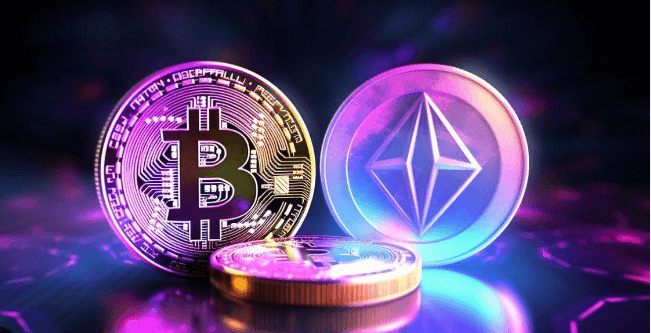Leading Crypto Gaming Tokens of 2024 and Their Prices

The year 2024 has seen a flurry of significant token launches, especially in the gaming sector. As the broader crypto market experiences a resurgence and airdrops become more frequent, gaming projects have emerged as notable contributors to this trend.
Highlighted below are the gaming tokens that have created significant buzz this year, ranked by their peak market cap to date according to the latest available pricing data. This list will be regularly updated as more tokens are introduced.
Our current benchmark for inclusion is a peak market cap of at least $100 million, although this threshold may be adjusted as the year progresses and new tokens enter the market.
1. Pixels
Ethereum’s most popular game at the moment is also behind one of this year’s biggest token launches. The PIXEL token, which is currently trading as PIXEL/USDT on Gate.io is priced at $0.34, debuted in late February for the casual farming game on Ethereum’s Ronin network. It witnessed over $1 billion in trading volume within its first day.
With hundreds of thousands of daily users, Pixels has captured the crypto community’s attention and boosted momentum for Ronin. PIXEL reached a price peak of over $1 in mid-March, propelling it to the top of the list. The peak market cap was calculated based on the circulating tokens at the time, though more tokens have since been unlocked.
2. Notcoin
The standout token of 2024 so far is Notcoin. Launched in May on The Open Network (TON), the NOT token rapidly achieved a market cap nearing $1.5 billion, driven by an airdrop claim accessible to approximately 35 million players.
Despite initial volatility typical of new tokens, with the price currently down over 50%, the future looks promising for Notcoin and the NOT token. The Telegram-based game is set to continue offering token rewards and has plans for new game releases in the future.
3. SAGA
Saga, while not solely focused on gaming, has placed significant emphasis on this sector. The layer-1 network has conducted play-to-airdrop campaigns and announced plans for a game publishing division called Saga Origins. According to Saga, about 80% of its testnet projects have a gaming focus.
The SAGA token made headlines with a record-breaking Binance Launchpool campaign, where users staked over $13.4 billion to earn SAGA rewards. This success propelled its market cap, placing it second on our list as of now. More airdrop rewards are anticipated in the future. At the time of writing, SAGA is priced at just over $2.
4. Xai
Xai, a layer-3 gaming network built on Ethereum’s Arbitrum scaler, kicked off the year with a major airdrop, rewarding Guardian Node operators and certain NFT holders. The XAI token saw a rapid ascent, peaking at more than double its initial drop value.
As games begin to launch on the network, Xai is expected to attract even more attention. Recently introduced staking rewards are also set to bolster interest in the token. Current market price of the XAI token is $0.59.
5. Portal
Launched on February 29, Portal entered the crypto gaming scene with a level of anticipation rarely seen. The buzz was fueled by an aggressive airdrop campaign that flooded social media and a Binance campaign (later surpassed by Saga) where users staked over $9 billion in hopes of earning rewards.
Despite the initial excitement, the token’s price dropped swiftly and has yet to recover as of this update. The Ethereum-based token, tied to an upcoming cross-chain gaming platform, faces the challenge of rekindling its initial hype.
GameFi explained
GameFi, a portmanteau of “gaming” and “finance,” represents the fusion of blockchain-based games and decentralized finance (DeFi). This innovative sector leverages blockchain technology to create games where players can earn cryptocurrency or digital assets as rewards for their participation and achievements. Unlike traditional gaming, where in-game assets and currencies are confined within the game’s ecosystem, GameFi allows these digital items to be traded, sold, or used across different platforms, thanks to their existence on a blockchain.
At the heart of GameFi are play-to-earn (P2E) mechanics, which transform the gaming experience by offering real financial incentives to players. In these games, players can earn tokens or NFTs (non-fungible tokens) by completing tasks, winning battles, or simply spending time in the game. These rewards can often be traded on cryptocurrency exchanges or NFT marketplaces, providing players with tangible value for their in-game efforts. This model not only enhances player engagement but also opens up new economic opportunities, particularly in regions where traditional job markets may be limited.
GameFi also incorporates elements of DeFi, such as staking, yield farming, and liquidity mining, into the gaming experience. Players can stake their tokens to earn additional rewards, provide liquidity to the game’s economy, or participate in governance decisions through decentralized autonomous organizations (DAOs). This integration of DeFi principles allows players to actively participate in the economic ecosystem of the game, making them stakeholders in the game’s success and sustainability.
Overall, GameFi represents a significant shift in the gaming industry, moving from a purely entertainment-focused model to one that combines enjoyment with financial gain. It democratizes the gaming economy, giving players more control over their in-game assets and the potential to generate real-world income. As blockchain technology continues to evolve, GameFi is likely to expand, offering even more innovative and immersive experiences that blur the line between gaming and finance.




